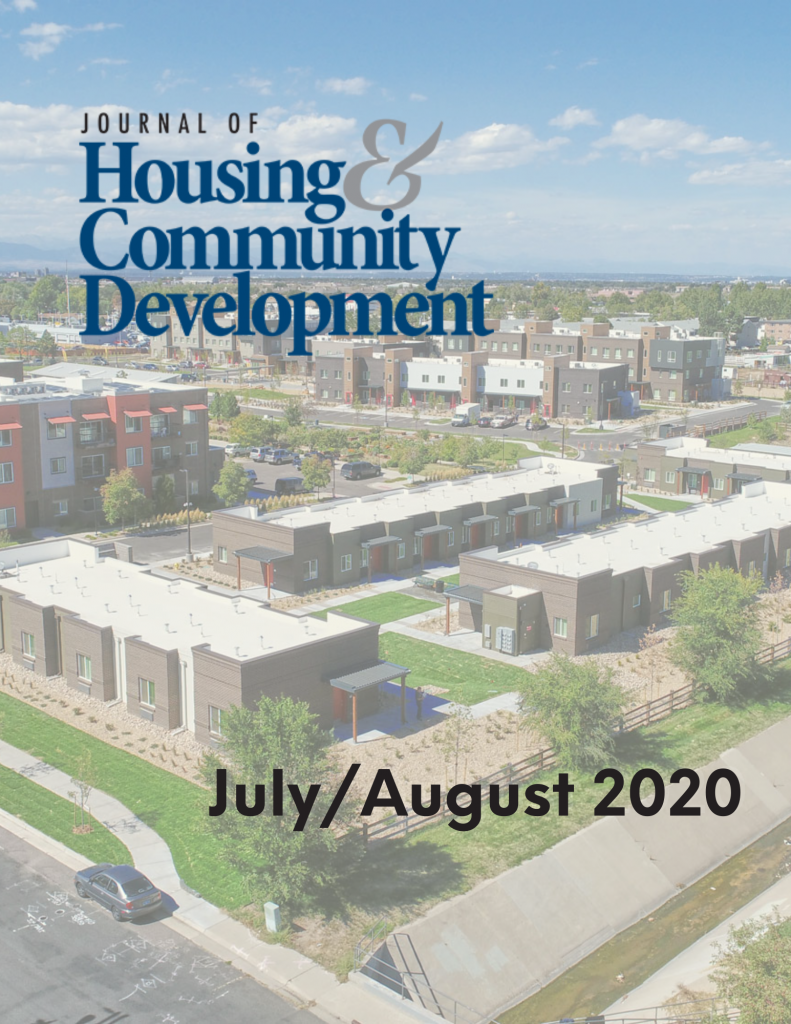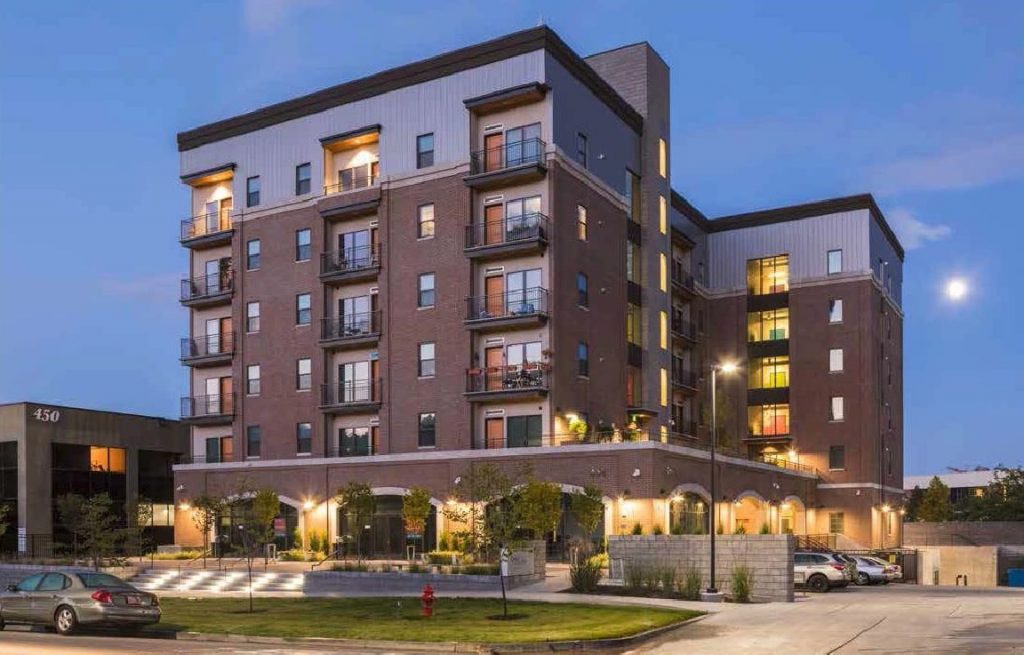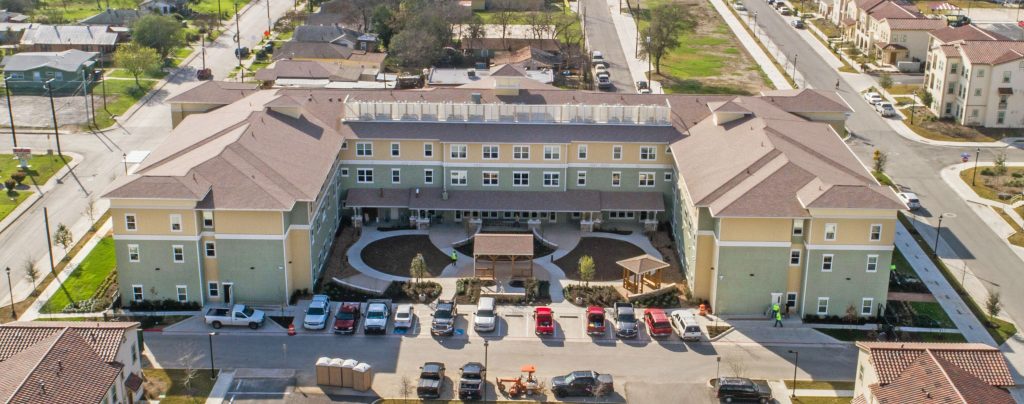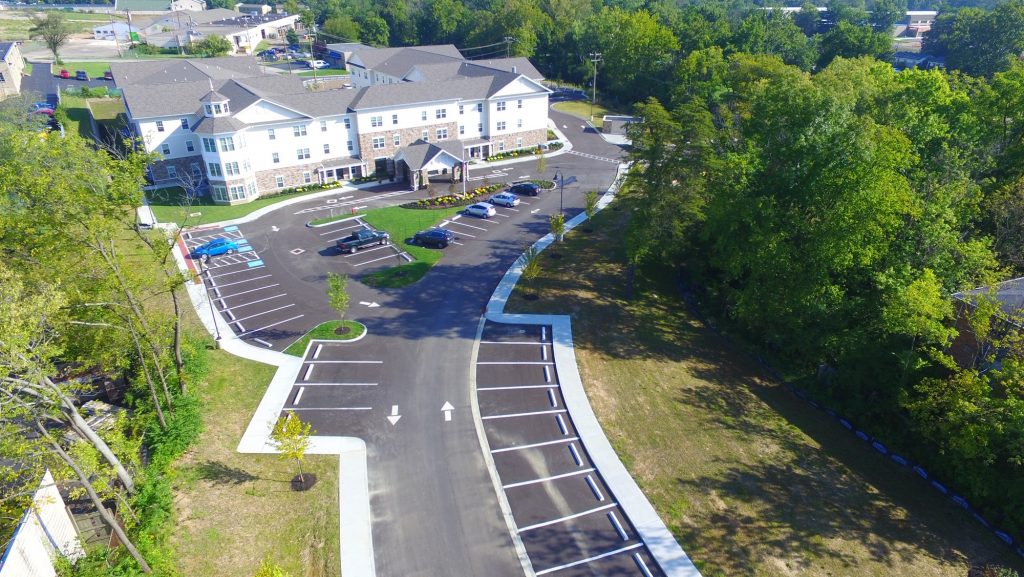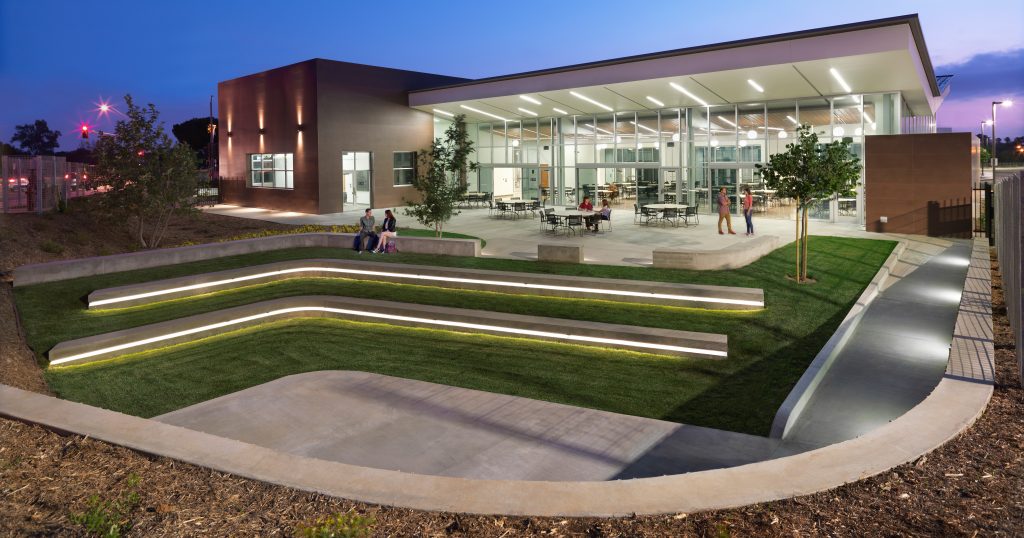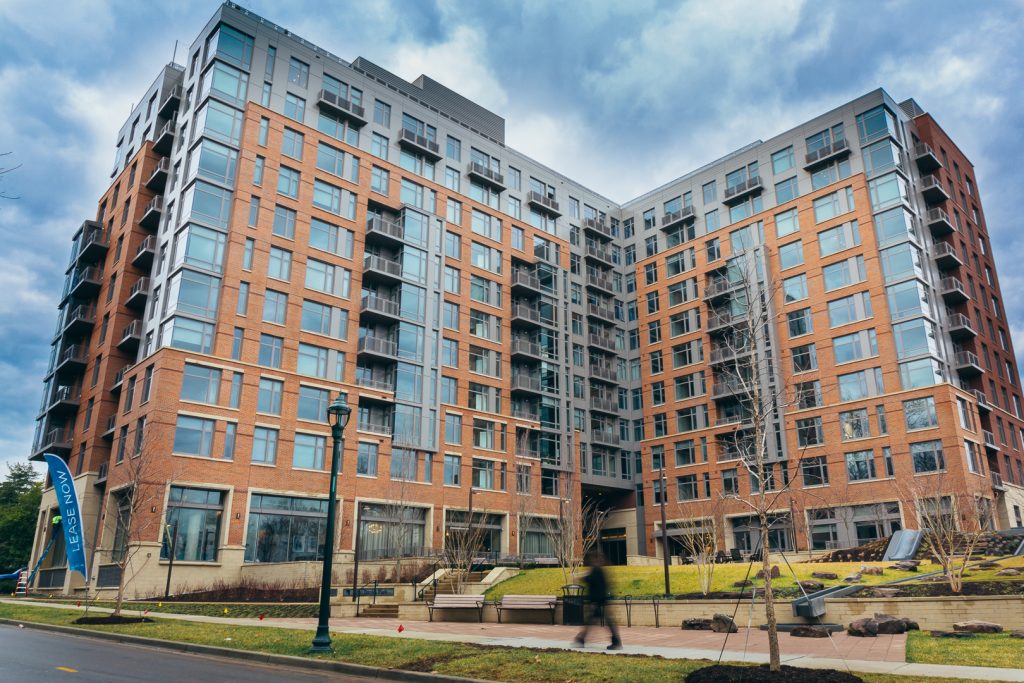The Public Housing Investment Update 2020
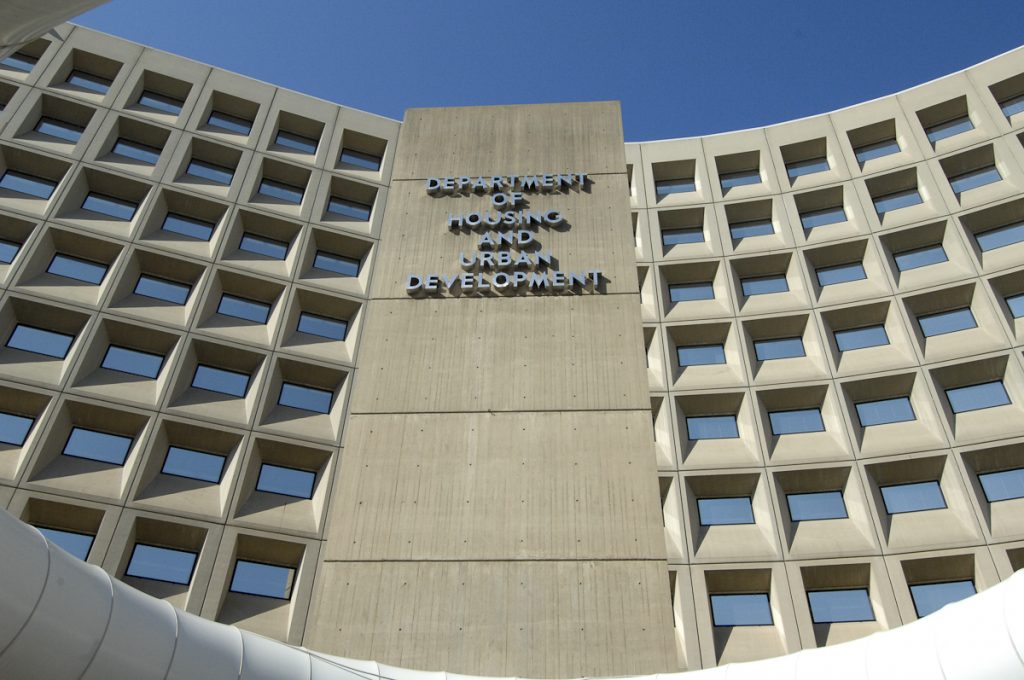
Pandemic, Systemic Racism and Public Housing
The coronavirus pandemic has changed all our lives. This devastating tragedy has reminded us who true heroes are.
Housing needs created by the impacts of the pandemic pile onto the pre-existing condition that only one of five low-income families eligible for deeply subsidized housing programs (public housing and Section 8) and need assistance are served. The House of Representatives proposed $100 billion in its May 2020 HEROES Act for emergency rental assistance not to address this unacceptable situation, but to keep conditions from dramatically worsening.
Public housing authorities (PHAs) have struggled to maintain operations. They have stepped up in unprecedented ways to support their communities and keep both their employees and subsidized households safe, including many high-risk residents housed in close quarters. But PHAs have seen slowed progress toward preserving and upgrading housing as rehabilitation work substantially ceases in occupied units and the construction trade practices social distancing.
The racially charged murders and accompanying protests, as well as the disproportionate impact of the pandemic on minorities, have been stark reminders of long-standing fundamental racial injustice. The need for these annual articles in significant part has been the under-funding of public housing rehabilitation or replacement, which is directly related to the lack of political favor for Blacks and other minorities served (or perceived to be served) by the program.
Major Housing Assistance Boost Coming?
Our sorrows and shocks of 2020 and the national deficiencies exposed again should spur us to a greater level of commitment to basic housing assistance, among other needed actions.
The House of Representatives made such a commitment in the Moving Forward Act passed in July 2020, which includes $70 billion in public housing Capital Funds and other important provisions. The House 2021 HUD appropriations act adds $24 billion in Capital Funds as part of an emergency infrastructure package.
The housing assistance proposals of Democratic presidential nominee Joe Biden or included in the Democratic platform likewise are sweeping. Both propose that every family eligible for a Section 8 voucher be able to receive one. That proposal would cost at least an additional $125 to $150 billion annually when fully implemented. Mr. Biden’s campaign website describes his proposals as a $640 billion investment in America’s housing.
Adoption of such proposals would constitute a re-set-in national priority for housing assistance. While this article focuses on critical steps forward for preservation and replacement of almost 1 million desperately needed public housing units mostly serving extremely low-income households, those steps should be considered in the context of a much larger potential advance in the coverage of housing assistance.
Public Housing Funding and Investment Programs
The principal means of addressing the public housing program’s capital needs is the annually appropriated Public Housing Capital Fund. As of 2018, funding for the Capital Fund had fallen 36% since 2000. Congress provided a 40% increase in 2018 and has sustained it in 2019 and 2020, but funding adjusted for inflation still is significantly lower than a decade ago. Operating funding also has fallen short most years of HUD-estimated needs. Public housing advocacy groups estimate capital needs to be in the $70 billion range, up from a HUD study estimate of $26 billion in 2010. The New York City Housing Authority (NYCHA) reports an estimated $40 billion need for NYCHA’s 175,000 units alone.
Prior to the Rental Assistance Demonstration (RAD), the basic mechanism for leveraging non-public housing funds to support public housing was the mixed finance public housing program. That program combines public housing units with other units and public housing funding with low-income housing tax credit (Tax Credit) equity and other funding sources. Its volume has dropped significantly in recent years. Total funding of HUD-approved mixed-finance transactions closed, including public housing, affordable housing and market-rate units was almost $1.9 billion annually from fiscal 2008 to 2012, as opposed to approximately $550 million from fiscal 2015 to 2019.
The program used to stretch annual appropriations to address the capital backlog through debt rather than equity has been the Capital Fund Financing Program (CFFP). The CFFP, authorized in 1998, allows PHAs to raise capital by borrowing against future Capital Fund appropriations. The CFFP has resulted in authorized borrowing of $4.6 billion, but virtually no new borrowing since 2013.
The availability of RAD has contributed substantially to the shrinkage in volume of public housing mixed finance and CFFP. In addition, the mixed-finance transactions had been driven in significant part by large up-front HOPE VI grants to address severely distressed public housing, for which appropriations levels shrank severely in the 2000s. The shakiness of public housing appropriations also contributed to the shrinkage, particularly for CFFP where lenders or bond- holders must rely on future appropriations for repayments.
The Choice Neighborhoods program of large grants for the revitalization of neighborhoods containing severely distressed public or assisted housing could make a fundamental difference if better funded, as HOPE VI did. The funding, however, allowed for just four implementation grants for 2019 and five projected for 2020. The Energy Performance Contracting (EPC) initiative, allowing PHAs to borrow to make energy-conserving investments in public housing and repay with subsidy saved by reduced energy consumption, is helpful but only in effect while the units covered remain public housing. PHAs generally must repay EPC financing as part of a public housing recapitalization that requires conversion to Section 8. EPC transactions continued at an annual approval volume of $207 million in 2018 (of which $151 million was for NYCHA) and $104 million in 2019.
Voucher Conversion Predecessors to RAD
The Bush administration proposed in its 2002 and 2003 budgets to allow the conversion of individual public housing developments to project-based vouchers (PBV), as a means of stabilizing funding and promoting rehabilitation through leveraging of loans, Tax Credits and other funding. While this proposal, called the Public Housing Reinvestment Initiative (PHRI), did not become law, some PHAs accomplished the same result through available administrative means. They used tenant protection vouchers (TPV) awarded by HUD upon approval of disposition of obsolete public housing under Section 18 of the U.S. Housing Act of 1937 (the Act) to fund replacement PBVs. They then combined PBVs with other resources such as 4% Tax Credits to undertake substantial rehabilitation of the developments.
TPVs typically are at higher subsidy levels than public housing and in some high-cost rental markets, much higher subsidy levels. Particularly in California but also in diverse locations elsewhere where such subsidy disparities existed, PHAs used this approach to fund rehabilitation or preservation of thousands of units prior to RAD. This generated a present-value increase in resources in the $1 billion range.
RAD Comes of Age
Building upon PHRI, other project-based financing proposals from the Millennial Commission and the Harvard Design School, work over several years by PHA groups such as NAHRO, CLPHA and PHADA, and other advocacy groups, including the Center for Budget and Policy Priorities (CBPP), and then driven by the Obama administration, Congress enacted RAD in the 2012 HUD Appropriations Act. RAD allows PHAs to convert public housing subsidy for individual projects to long-term Section 8 PBV or Project-Based Rental Assistance contracts, if conversion does not result in increased initial subsidy from public housing levels. A major question from the outset was whether the no cost increase limitation that was a condition of enactment would make RAD infeasible in many cases.
The Obama administration’s innovative and skillful rollout, the RAD office continued outstanding work supported by the Trump administration, PHA innovativeness and lender and investor confidence in the security of long-term Section 8 contracts and ability to work with debt-free properties have led to RAD success despite the cost limitation. Congress, pushed by both administrations and industry-based groups such as a “RAD Collaborative” formed to promote and improve RAD, have increased the public housing unit cap over several years from 60,000 to 455,000 units.
According to HUD’s October 2019 evaluation for the demonstration, RAD projects raised $12.6 billion in private and other funds to convert 103,268 public housing units, an average of $121,747 per unit. The largest single source of funds was equity from sale of 4% Tax Credits, followed by equity from sale of 9% Tax Credits.
This congressionally mandated and ironically named “Final Report” generally found RAD to be successful. The report raised some concerns for the longer term, including that contractual and other safeguards for preserving this housing over the decades have not been tested. As of September 2020, HUD and PHAs had converted over 130,000 units and leveraged almost $10 billion in hard construction costs.
HUD released a revised notice setting basic RAD rules in November 2019. Innovations included tenant protections for residents supported by non-RAD as well as RAD PBVs on RAD sites, thus supporting transactions combining RAD and non-RAD approaches; ability for PHAs to trade their funding resources; a RAD rent bonus for units located in ”Opportunity Zones”; and an opening to streamline RAD’s use for replacement of demolished or disposed-of units authorized for funding consistent with the “Faircloth Amendment” to the Act, an authorization now largely unused because capital must be found to produce the units and the resulting housing would be public housing units likely to be under-funded.
Tax Credits
The most common means of enabling rehabilitation of public housing stock that otherwise would not pencil out with RAD rents is 4% Tax Credits. These Tax Credits are available for transactions to which a Tax Credit allocating agency allocates the required level of tax-exempt bonds under its private activity bond cap set by a national formula. In most states bond cap and 4% Tax Credits are readily available, as opposed to highly competitive 9% Tax Credits. The relatively shallow-subsidy 4% Tax Credits work well when combined with Section 8 to allow affordability for extremely low-income households.
The value of 4% Tax Credits has been eroded by very low interest and discount rates. This occurs because the law defines 4% Tax Credits more precisely as the level at which the Tax Credits will have a 30% present value relative to eligible development costs, and the Treasury-set percentage to achieve that value for the 10-year period of the Tax Credits is now just over 3%. To remedy this, the Moving Forward Act sets the value of 4% Tax Credits at 4% annually. The Act also reduces the percentage of development costs that must be funded through bonds that require bond cap to make a development eligible for 4% Tax Credits, authorizes additional bond cap, authorizes an increase in available 9% Tax Credits and increases the per-unit value of Tax Credits for projects substantially serving extremely low-income households.
Public Housing Repositioning
Enter “public housing repositioning”, the current administration’s prescription for public housing. The effort includes an “Agency Priority Goal” in HUD’s Strategic Plan of “transitioning 125,000 public housing units into a more sustainable platform from the end of fiscal year 2018 through the end of fiscal year 2020”; HUD staff “Repositioning Assistance Panels” for training PHAs and “Repositioning Expeditors” to help move along the approval process for such proposals; a HUD Web page; and various notices, “Frequently Asked Questions” and policy pronouncements.
HUD’s Repositioning Public Housing webpage states, “Repositioning from a public housing platform to other forms of HUD rental assistance can help PHAs address rehabilitation and physical needs, as well as place properties on a more stable financial foundation. The Department’s repositioning efforts will provide communities with additional flexibilities to better meet local needs and funding options to achieve long-term viability for their affordable housing…” “Through repositioning, public housing agencies (PHAs) and their partners are able to access financing to repair and preserve units to provide better homes to thousands of families and more flexibly manage their affordable housing to better meet local needs.”
That sounds like a constructive effort to preserve low-income housing opportunities. Nevertheless, the effort has generated suspicion regarding its intentions (e.g., a February 2020 House Financial Services subcommittee hearing entitled “A Future without public housing? Examining the Trump administration’s efforts to eliminate public housing”). The current administration claims repositioning is necessary in substantial part because annual public housing appropriations are grossly inadequate, yet has requested new public housing appropriations from Congress at a phase-out level. Such appropriations would endanger public housing and virtually stop new RAD conversions, because of the drop in the public housing subsidy levels that determine RAD rents along with tenant incomes. In addition, some of HUD’s repositioning mechanisms allow for replacement of the public housing units with either tenant-based or project-based assistance and leave the extent of replacement to the PHAs. That raises concerns that tenant-based assistance may not be funded as securely as public housing units (a concern not substantiated by federal appropriations history) and more immediately, that some PHAs may not replace units with any kind of housing assistance.
On the other hand, the public housing repositioning effort leads with RAD, which most fundamentally strives to preserve low-income housing opportunities. Moreover, the successful conversion of public housing to non-RAD PBV has continued to occur, helped by provisions in the Housing Opportunity Through Modernization Act of 2016 that make PBVs more available for and easier to use for this purpose. Through this mechanism, San Francisco, Cambridge, Mass., New York City and many other PHAs have achieved substantial preservation that could not have occurred solely under RAD. Consideration of repositioning thus demands distinguishing between mechanisms that result in full long-term preservation of hard units and those that do not.
HUD’s repositioning efforts have added the potential for additional preservation resources that RAD does not have. These new steps, memorialized in Office of Public and Indian Housing (PIH) Notices in 2018 and 2019, have expanded the circumstances where HUD would award TPVs to replace public housing:
- “RAD Blend” concept where HUD supports public housing substantial rehabilitation achieved without use of competitive 9% Tax Credits, by providing for TPVs rather than lower-subsidy RAD for 25% of the site’s public housing units.
- Less stringent standard for showing that a public housing development is obsolete and thus eligible for disposition.
- Less stringent standards for approving disposition for difficult-to-manage scattered-site public housing, as well as for a PHA’s last 50 public housing units.
- Streamlined “voluntary conversion” to vouchers under section 22 of the Act for a PHA’s last 250 units of public housing.
Apart from RAD Blend, where PHAs had submitted 7,265 units for approval through early September 2020, these steps have not resulted so far in substantial additional affordable housing preservation (Some transactions of this nature involving large obsolete developments transitioning to non-RAD PBVs are in process.) HUD and Congress need to address obstacles and take affirmative steps to facilitate such non-RAD conversions, including the following:
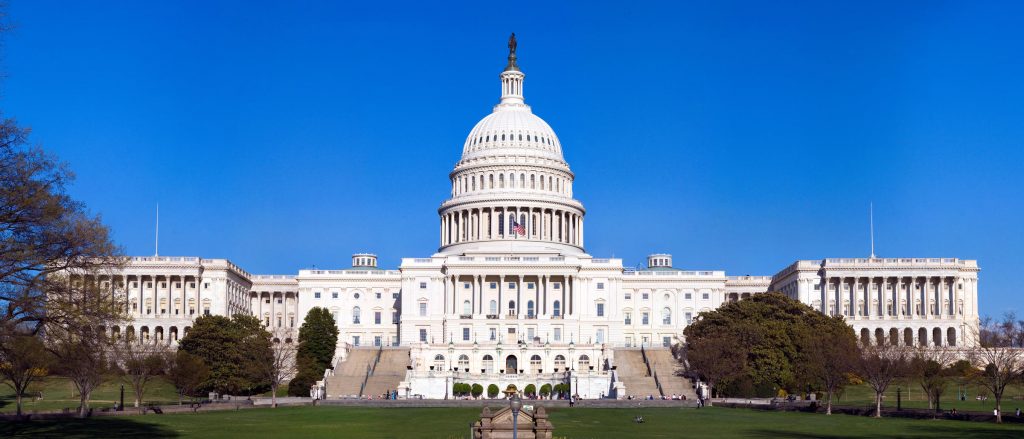
First (HUD), the demonstration to HUD that a development meets the obsolescence standard for disposition approval involves sometimes-extended or even excruciating disputes between PHA and HUD experts regarding the need for specific work items to restore a development in a cost-effective manner—even though the whole exercise is theoretical and the work never will be undertaken. While this process may be appropriate for proposed demolition or disposition without full hard-unit replacement, it is overly exacting where the PHA plans to replace the public housing fully with long-term PBV contracts. With 51% of public housing units having been completed by 1975 and chronically under-funded for several decades, a higher percentage of the public housing stock is in need of substantial rehabilitation or replacement than is served well with the application of such an intensive obsolescence review process.
HUD’s policy regarding public housing is inconsistent with its policy regarding Project-Based Rental Assistance. For the latter, owners often can receive market rent-based Section 8 subsidies at any time they agree to extend their contracts by 20 years. That often would be true if they qualify for “discretionary mark up to market” (MUTM) because their project is a priority based on serving mostly senior, disabled or large family households, location in a low vacancy rate area or demonstrated state or local support. While the situation of these projects is arguably different from public housing because private owners have the ability to opt out of their Section 8 contracts at the end of their contract terms, public housing is equally endangered through potential annual under-funding rather than opt-out.
HUD’s PIH 2018 notice includes disposition categories for “Improved Efficiency/Effectiveness” through off-site or on-site development of low-income housing. These categories recognize that there are situations other than those covered by RAD Blend, obsolescence, scattered sites and exit of the public housing program that merit the award of replacement TPVs. These categories, however, limit replacement TPVs to 25% of the public housing units being disposed of. A PHA must give up subsidies to its community for 75% of the units to proceed.
HUD could build upon the MUTM or “Improved Efficiency/Effectiveness” approaches in a responsible manner that furthers preservation of low-income units. HUD could award full replacement vouchers for the preservation with PBV of high-priority developments that will meet the same requirements as RAD Blend for rehabilitation without use of 9% Tax Credits. Such developments could be defined as is done for discretionary MUTM, with some additions to the high-priority categories. Alternatively, HUD could revamp its “Improved Efficiency/Effectiveness” approach to expand the universe of approvable dispositions, by narrowing the approval requirements to high-priority categories but awarding full rather than 25% replacement vouchers. (HUD also could go part of the way simply by increasing the percentage of non-RAD PBVs allowable in RAD Blend transactions, but that would be a much less powerful step.)
These approaches would allow for the preservation or replacement of public housing stock with PBVs where RAD Blend is inadequate. PHAs also would be able to address other situations to create low-income housing opportunities superior to the current public housing developments. One example is a site that is more densely built in keeping with its neighborhood and supports both the full replacement of public housing units and additional low- or mixed-income income units. Another might be replacement of family housing with resident- supported housing in lower-poverty neighborhoods.
Second (Congress), the TPV appropriations process does not account for the savings in subsidy resulting from replacement of public housing units with TPV. This omission results in over-statement for appropriations purposes of the net cost of TPVs. HUD generally has had enough TPVs to cover preservation transactions. The over-statement of TPV appropriations cost could be problematic, however, if preservation transactions reliant on TPVs were expanded substantially. Congress could remedy this by adopting a mechanism like the RAD statutory authorization, to allow the transfer of funds from public housing accounts to provide partial funding for the TPVs.
Third (Congress), some public housing rules regarding rents and occupancy treat public housing households more favorably than Section 8 households. The resulting possibility that households could face rent increases or smaller units upon conversion has discouraged some preservation efforts. Resident groups sometimes have viewed this possibility as unreasonable even when the ultimate result will be improved housing, because they did not do anything to cause the higher rents or more crowded conditions. Congress instead could require that the public housing households be held harmless, so that the switch from one form of subsidy to another does not disadvantage them.
Fourth (Congress), the public housing program provides for five years of Capital Funds for public housing preservation or replacement when a public housing development is demolished or disposed of and not replaced with public housing. Congress could expand the use of these funds to allow them to support replacement project-based vouchers under long-term contracts.
Fifth (Congress), PHAs have the right to restore public housing to the number of units they had in 1999, under the Faircloth Amendment referenced earlier. Congress could make this approach more usable, by allowing the public housing funding made available instead to be used for Section 8.
Sixth, Congress could address the inability of bond caps in several states to accommodate 4% Tax Credit transactions needed for public housing preservation. Congress could exempt public housing preservation transactions from the bond caps, which it has done for some other types of private activity bonds otherwise subject to the caps. This would have a secondary beneficial effect of expanding bond cap space to support other types of assisted housing and other important development projects with private activity bonds. The proposal could augment Tax Credit legislative proposals discussed earlier.
Seventh, Congress could build upon lessons learned in RAD to support non-RAD PBV conversions. For example, RAD allows the use of public housing funding to support RAD rehabilitation costs; similar treatment for non-RAD PBV conversions is critical. RAD also allows subsidy to commence for units free of life-threating conditions but not yet meeting Housing Quality Standards, which boosts rehabilitation and allows rehabilitation to proceed efficiently without any substantial increase in risk to residents.
Eighth, HUD could build upon the 30-year use agreements HUD typically requires for PBV preservation transactions to assure the long-term affordability of these units. For example, among other steps, HUD could provide additional guidance to assure that PHAs have the most advantageous options to protect the properties when the initial 15-year Tax Credit compliance period ends and investors want to exit transactions (a step needed for all repositioning and Tax Credit initiatives).
Administrative or legislative action regarding these matters as needed, along with funding needed to make these initiatives work and for the remaining public housing stock, could facilitate the preservation and hard-unit replacement of public housing resources.
Facilitating Full Public Housing Recapitalization with Non-RAD PBVs
- Provide 100% Tenant Protection Voucher (TPV) awards for broad high-priority categories of public housing recapitalizations
- Authorize subsidy transfers from converted public housing units to partially fund TPVs
- Protect current residents from rent increases or other negative aspects of conversions
- Allow public housing transitional funds to be expended for non-RAD PBV conversions
- Allow “Faircloth amendment” replacement housing subsidy to be used for RAD or non-RAD PBV conversions
- Provide bond cap relief to assure availability of 4% tax credits for public housing recapitalizations
- Allow RAD PBV flexibilities to apply to non-RAD PBV conversions, including ability to use public housing funds for development costs
- Strengthen current substantial protections for long-term preservation as low-income housing
NYCHA
Given its needs and the complexities of addressing them, NYCHA’s preservation challenge stands apart. For example, NYCHA estimates that just to address the hazardous conditions that have received court and press attention, notably mold, lead-based paint, heat, deficient elevators, pests and other basic conditions, could require rehabilitation work in the $170,000 per unit range. With that work addressed, many buildings would be serviceable but still outmoded in many respects.
In addition to and eclipsing the management challenge, NYCHA will need to use all available resources to preserve this low-income housing for the long term and request billions of dollars more, as well as administrative flexibility in the rehabilitation process. NYCHA published “A Blueprint for Change” in July 2020, which thoughtfully and creatively addresses these and other related issues and includes a call for unprecedented TPV resources.
Next Steps
Our immediate efforts must be to address the pandemic and related damage with essential funding and to demand effective national leadership, going far beyond housing assistance. Congress and HUD then must set the framework so that PHAs and their partners can ratchet up housing assistance efforts substantially, efficiently, and effectively.
Author’s Bio
Rod Solomon is an attorney with Hawkins Delafield & Wood LLP in Washington, DC. He can be reached at rsolomon@hawkins.com.
The author’s observations and recommendations have benefitted from the ideas of many individuals and groups, including HUD staff, PHA groups, individual PHA staff and others. The CBPP and the Urban Institute have held a series of meetings on the future of public housing in which the author has participated, and are developing recommendations. The author takes full responsibility, however, for the contents of this article.
More Articles in this Issue
Designing Around Obstacles
The Housing Authority of Salt Lake City wins a 2019 Award of Excellence in Project…Sustainable Senior Living in San Antonio
The San Antonio Housing Authority (SAHA) wins a 2019 Award of Excellence in Project Design…Remaking the “Curve”
The Cincinnati Metropolitan Housing Authority wins a 2019 Award of Excellence in Project Design for partnering with the Colerain Township to…Building Community in Los Angeles County
The Los Angeles County Development Authority wins a 2019 Award of Excellence in Project Design…Affordability in Aurora: Quality Homes for Families and Seniors
The Aurora Housing Authority (AHA) wins a 2019 Award of Excellence in Project Design for…How Participatory Budgeting Can Create Affordable Housing and a Just Economy
This article was originally published by the National Community Reinvestment Coalition In communities of all…Creating a Vibrant and Sustainable Community
The Housing Opportunities Commission of Montgomery County (HOC) wins a 2019 Award of Excellence in Project Design for developing The Lindley, an…
